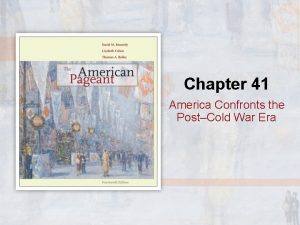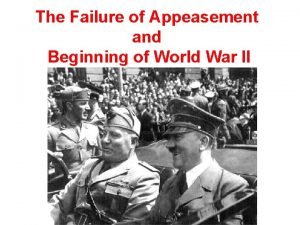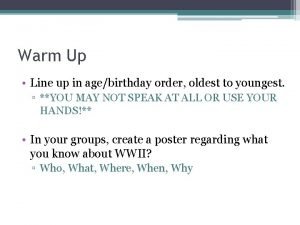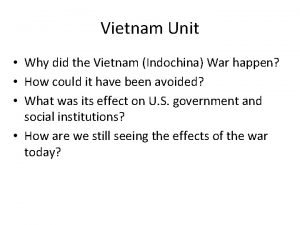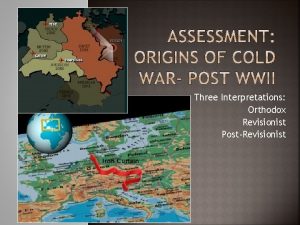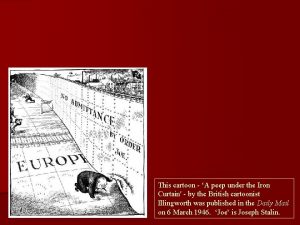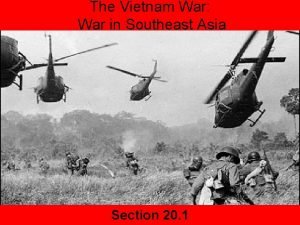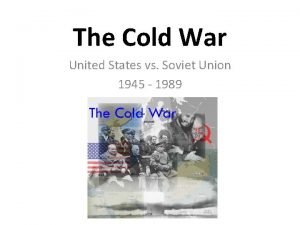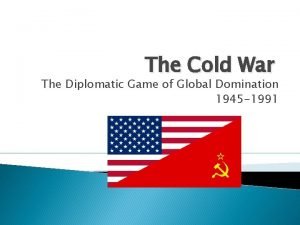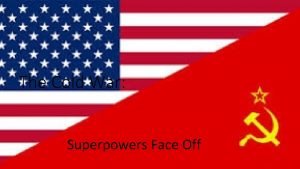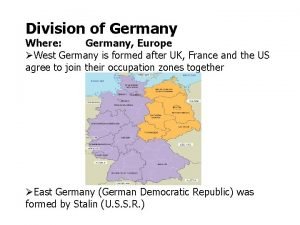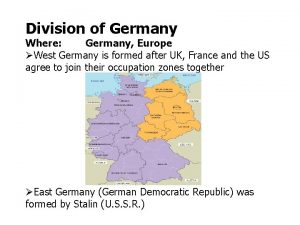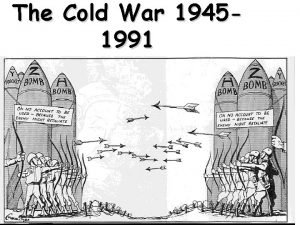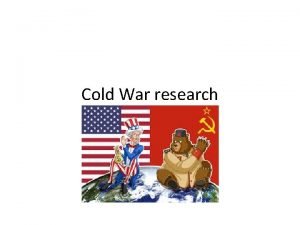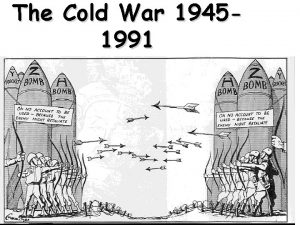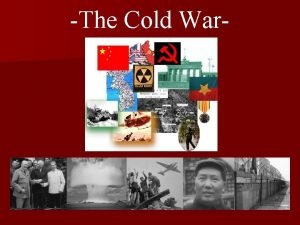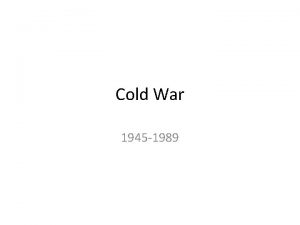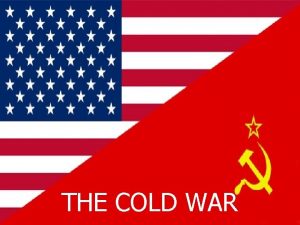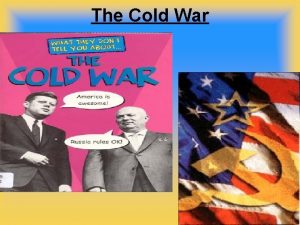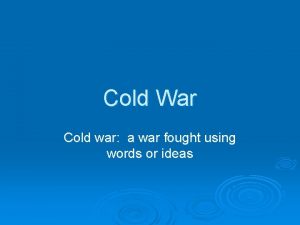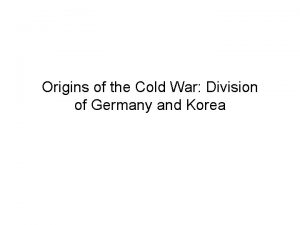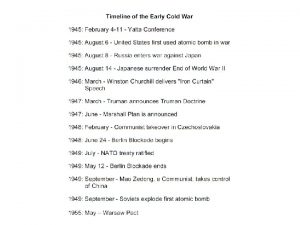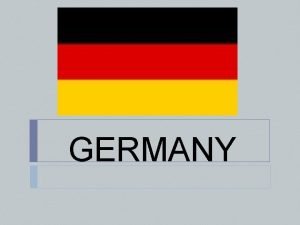Cold War Case Study Germany Post War Division





















- Slides: 21

Cold War Case Study: Germany

Post War Division of Germany/Berlin • Why do the Allies decided to divide Germany? • Reparations – Soviet Union dismantled and moved factories and other resources out of E. Germany to rebuilt USSR. – W. Allies took some reparations but wanted German economy to recover to support political stability. • Allies extend Marshall Plan to W. Germany • In response, the Soviet Union strengthens it’s control of E. Germany

A divided Germany


Berlin Blockade and Airlift

Causes of the Blockade • February 1948—Western powers propose creating a new four-power currency (money). • March 1948—Western powers announce plans for unification of western zones and a new West German government. – This would include West Berlin. • Stalin declared unified currency and government was a violation of Yalta/Potsdam because it went against four power administration of Germany.

Berlin Blockade • June 24 1948 -May 12 1949 • The Soviet Union blocked all water, road, and railroad transportation through East Germany in to West Berlin. • With no treaty between the four powers about transportation, Stalin was not in violation of law. • Stalin hopes this will force the Western powers to abandon Berlin and leave it in full control of the Soviet sector.

Berlin Airlift • Western powers set up an airlift that supplied W. Berlin with food and fuel for more than a year. • Average of 13, 000 tons of supplies per day. • January 1949: Planes landed in West Berlin every three minutes delivering a total of 275, 000 tons of supplies. • Overall the airlift delivered 2, 326, 406 tons of supplies on 278, 228 flights using pilots from the US, UK, Australia, Canada, New Zealand, and South Africa.




Gale Halvorsen: the Candy Bomber

The Big Lift (1950) • During the 1948 Berlin Airlift, as British and American forces break a Russian blockade of the divided German city, a pair of American soldiers fall in love with local women against a backdrop of increasing Cold War tensions. Ground control specialist Hank Kowalski (Paul Douglas) finds happiness with the idealistic Gerda (Bruni Löbel), but, when pilot Danny Mac. Cullough (Montgomery Clift) falls for the beautiful, mysterious Frederica (Cornell Borchers), his friends question her motives.

Impact and Significance • Blockade convinced western powers of the need to protect the western zones. • May 23 1949—creation of the Federal Republic of Germany (FRG or West Germany) – Formal unification of the western zones with a written constitution and elections. – Parliamentary Democracy (capitalist) – Western powers maintained military presence • October 1949—creation of the German Democratic Republic (GDR or East Germany). – Socialist state (communist) – Secret police monitored everything – Massive emigration

Berlin Wall

Homework • Critically read the handout on the Berlin Crisis • Due Tuesday




Fall of Berlin Wall

• Nov. 9 1989 wall comes down • The reunification of East and West Germany was made official on October 3, 1990
 The cold war lesson 1
The cold war lesson 1 Nationalism case study italy and germany
Nationalism case study italy and germany America confronts the post-cold war era
America confronts the post-cold war era Cold war proxy wars
Cold war proxy wars Best worst and average case
Best worst and average case Hershey's erp failure
Hershey's erp failure Britain and france declared war on germany
Britain and france declared war on germany Long division and short division
Long division and short division Division of polynomials
Division of polynomials Short division
Short division Synthetic diviison
Synthetic diviison Cold case
Cold case Acrostic poem cold war
Acrostic poem cold war Napalm vietnam war
Napalm vietnam war Postrevisionist
Postrevisionist Iron curtain political cartoon
Iron curtain political cartoon Operation rolling thunder cold war
Operation rolling thunder cold war What caused the cold war
What caused the cold war Who fought in the cold war
Who fought in the cold war Effects of the cold war
Effects of the cold war Superpowers cold war
Superpowers cold war Cold war crash course
Cold war crash course


